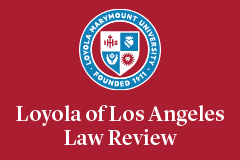Abstract
Enactment of the TCJA was followed by a mad dash to understand its effects. The speed and process of enactment left no time for serious attempts to analyze whether the TCJA transforms the income tax system in any fundamental way. This Essay is a first step in that analysis. Although some of the most important changes I discuss are set to expire or phase out after 2025, understanding their policy implications is important, not only because they are the law now but also because Congress may extend them, perhaps indefinitely.
The TCJA has changed the way the tax system operationalizes the principles of horizontal equity and ability to pay, has brought the base of the regular tax closer to the base of the AMT, and has increased the number of tax provisions that have been promulgated in the form of standards, which will require the deployment of significant administrative and judicial resources before they can be implemented effectively. By removing consideration of taxpayers’ support obligations from the tax base (except as relevant to the determination of filing status in the case of taxpayers who might qualify for the statuses of head of household or surviving spouse), the TCJA has jettisoned the value of ability to pay. It has unmoored the tax base zero bracket from the poverty level and created a system in which two taxpayers with very different ability to pay as a result of support obligations will be taxed the same, and in which two taxpayers with the same ability to pay will be taxed differently. The TCJA has turned the concept of horizontal equity on its head. In some cases the tax base will even be the taxpayer’s gross income in its entirety, subjecting to taxation even the amount needed for minimal subsistence.
Under the TCJA the income tax will tax income from labor differently depending on the form in which the labor is performed. Labor income earned in the form of wages—by the performance of services as an employee—will be fully taxed at ordinary income rates. But some income earned by the performance of labor in any other way—as an independent contractor, for example—will be taxed at only 80 percent of the rate that would otherwise apply. Ability to pay is irrelevant.
Although the foregoing fundamental changes to the tax system were not clearly identified and debated by scholars and tax professionals prior to enactment, the idea of shifting to a territorial system was. The TCJA rejects the principle of capital export neutrality, thereby creating a dramatic difference in the tax burden placed on income as a result of its source: henceforth, much foreign source income received by some U.S. persons, in the U.S., will not be subject to U.S. income tax, ever. But the shift to territorial is incomplete. The TCJA distinguishes between the taxation of foreign and domestic source income only for some taxpayers. It lacks a comprehensive policy foundation either domestically, or internationally.
Recommended Citation
Alice G. Abreu, Tax 2018: Requiem for Ability to Pay, 51 Loy. L.A. Rev. 61 (2018).


